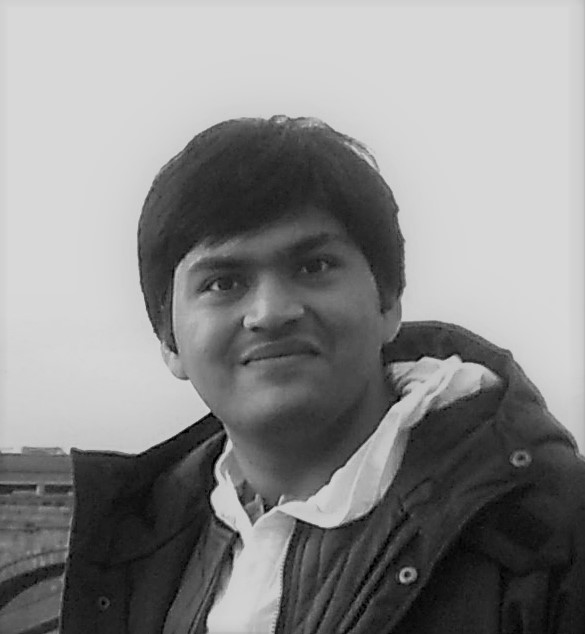Every good project has a great team behind it, so in this blog post we introduce you to some of the key members of the inter-disciplinary project team.
The project team includes members from Urban Studies & Planning (lead Department), Computer Sciences, Engineering and Architecture.
 |
Ana Maria Monsalve, Student Ambassador (Urban Studies & Planning)
As a student ambassador, I have been able to be part of the exciting process of testing 3D models in VR and AR. I have been in charge of exploring supportive software to improve the way we design the urban space. Thus, as a project assistant I have re-explored aspects of scale, proportion that before were not as approachable as they are with VR. Therefore, my purpose as ambassador consists of helping find new ways that will support students to present their ideas but also to encourage them to explore new tools that will make them more competent in their professional life. |
 |
Bobby Nisha, Project Lead & MA UDP Programme Director (Urban Studies & Planning)
As an Architect and Urban Designer, my approach to Design teaching begins from a position of respecting the self-expression and individuality of students to further inspire creative thinking. My research interest in Innovative models of design learning partnered me with Bryony Olney to explore the potential of virtual reality in Design learning and Teaching. As the programme Director/ module convenor my role is to embed the VR/AR technology in our design curriculum with learning tasks/assessment deliverables and create learning environments that acts as creative incubators in which learners are mentored, stimulated, provoked and engaged. |
 |
Bryony Olney, Project Lead & Learning Technologist (Urban Studies & Planning)
I ensure that the technical solutions we are employing are fit for purpose for teaching and learning, and offer students the best possible experience with virtual and augmented reality. This includes considering accessibility issues outside of the classroom, ease of functionality and use and maximum impact opportunities for learning. I have a hungry curiosity and interest in virtual reality, and my interest is very much grounded in the ease of usability and set up of any solution we use, as much from the teaching side as from the students!
|
 |
Chander Kant Aggarwal, Student Ambassador (Urban Studies & Planning)
I am an architect and currently MA Urban Design and Planning student at TUoS with the dept. of Urban Studies and Planning. I have been working for the DDCF project as a Student Ambassador. It has been exciting to explore different interfaces of various virtual/augmented reality platforms to come up with their strengths and short comings. Experiencing architectural/urban design proposals in VR/AR helped me find generic problems a student could have while designing just in 2D plans. I am working with high hopes to upgrade the way consultants and clients visualize their projects. |
 |
Mike Croucher, EPSRC Research Software Engineering Fellow (Computer Science)
As part of Sheffield’s Research Software Engineering function I am providing a fully automated photogrammetry workflow which uses High Performance Computing facilities to turn a set of photographs of an area into a 3D model. Future developments will include making use of public cloud computing facilities and giving students more in-depth knowledge of what is possible when you combine simple computer programming with state of the art software and high performance computing facilities. |
 |
Ralph Mackinder, Media Unit Manager (Architecture)
My Role on the project has been both Technical and Strategic. I’ve worked to develop the concept of virtual environments, from capture all the way to delivery of user experiences utilising the latest VR technology. I’ve worked with project team members to develop a fast and efficient workflow that allows students to create photorealistic modelling that can be interacted with in a virtual reality environment. This photogrammetry-based approach combines my background in photography with an emerging specialism in VR and AR. A really fun and challenging project to be involved in! |
 |
Rob Stacey, Teaching Technician (Multidisciplinary Engineering Education)
I have been responsible for the design and construction of a mobile virtual reality systems solution, enabling the virtual reality equipment to be used just about anywhere! I designed and built the entire system from scratch, from a rough sketch on a piece of paper to designing it in CAD, specifying the components required and, before making that virtual design a reality, building and piecing it together, making good use of the equipment available in the Diamond laboratories including the Laser cutters and 3D Printers. |
 |
Samuel Dent, Project Manager (Strategy, Planning, Governance & Change)
Samuel is a project manager in the office for Strategy, Planning, Governance and Change. Sam’s role is to support the project team to achieve their vision for the project, and maximise its impact, and support timely delivery. Sam has financial oversight of the project, supporting good governance and evaluation, and maximising the HE sector-wide impact and dissemination of the projects deliverables. |

